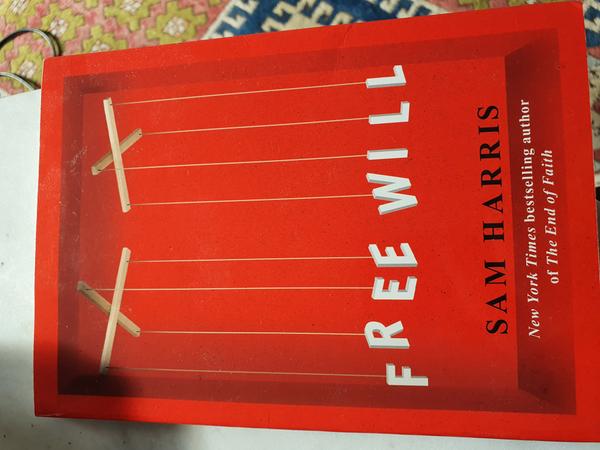Books - Read and Enjoyed
Free Will
Sam Harris
Free Press, 2012

Sam Harris argues that free will does not exist because it is simply not compatible with the laws of physics and the way our brain works.
We all have the subjective experience, that we are the authors of our conscious thoughts and that we make decisions, that are not imposed upon us by anything outside our heads. This subjective experience is very strong and is the ultimate source of our perception that we have a free will. Harris argues that this perception is an illusion because all our thoughts and decisions are generated by neural processes which are based on the activities of many neurons. Those neurons simply obey the laws of chemistry and physics and there is nothing undetermined or free in this whole process. If I decide to write a review about this book, I do have the impression that I had a choice and made a conscious decision to write this review today. But freedom of choice is an illusion since my choice is as free as the falling of a book when it is pushed off the table. It is a biological, chemical, physical process. Period.
This argument is obviously correct if we do not assume that stochastic effects of quantum mechanics facilitates a free will, as for instance Roger Penrose has contemplated (e.g in his book “The emperors new mind”). The world may be nondeterministic but according to Harris that would not help bringing about free will, since there is nothing free about a nondeterministic effect in quantum mechanics or elsewhere in physics.
However, in philosophy there is the compatibilist position that argues that free will is compatible with a fully deterministic world. Daniel Dennett is perhaps the most well known contemporary philosopher of this school. Dennett argues, that all the neurons and the neural processes that lead to the contemplation of alternative choices and finally to a decision are also part of the “I”. So if their working contributes to free will, this is compatible with the notion of me having a free will. So the concept of a homunculus sitting in the brain, exerting free will and making all decisions, may be an illusion, but the brain as a whole with all its neurons can still be considered to have a free will.
Compatabilists generally claim that a person is free as long as he is free from any outer or inner compulsion that would prevent him from acting on his actual desires and intentions.
(p 16)
This is a rather modest claim and it is indeed compatible with a deterministic universe because it only states that humans have desires, which are some mental states of their brains, and if they are not inhibited by an external force to initiate actions that lead to the fulfillment of their desires, they can be considered free. But this position is somewhat unsatisfactory because it leaves the question of free will essentially unanswered. Or rather, it answers it in the same way as Harris, but with a different emphasis. It essentially means, that free will as an idealized, subjective experience is unfounded, but people are free as long as they can go about fulfilling their desires.
Quite a large part of the book is concerned with moral and legal questions. If there is no free will, our informal rules of society and our formal legal codes has to be reconsidered. A criminal was never free to decide for or against committing the crime. He or she was doing it because of their neural architecture, their genetics, their education, and all the history that went before and led to the crime. From that perspective it could be morally acceptable to lock someone up if that protects the rest of the society, but it seems meaningless to punish anybody. A criminal becomes simply a medical case that either is harmless, can be cured, or must be isolated.
These moral and legal implications are certainly urgent to consider and discuss broadly in society because the legal code and the naive morality of people is heavily shaped by concepts of personal responsibility, punishment, and even revenge.
In conclusion this short, readable book is worthwhile for anyone to read who is curious about the concept of free will.
(AJ February 2022)
